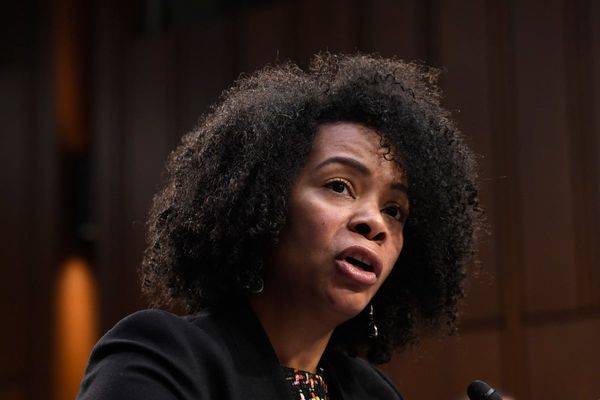
In early 2018, Tomer Shalit looked at the overwhelming mass of data and the tens of thousands of pages of scientific studies and parliamentary reports that had gone into the making of Sweden’s bold new Climate Act, and thought: this is hopeless.
“There was this avalanche of material, but none of it was operational,” he said. “There were solid, ambitious targets, but no roadmaps for reaching them. There was a ton of evidence, but no concrete action plans. And nothing was connected.”
So Shalit – then a consultant devising “agile solutions” for business – took it all and turned it into one four-metre poster that broke Sweden’s entire green transition down into its constituent parts, presenting them in a way that made sense.
He gatecrashed a government event and showed it to an enthusiastic environment minister. With the backing of Sweden’s environment and energy agencies, it went digital and became Panorama – a national climate action plan, on one webpage.
Five years later, Shalit’s poster has evolved into an online tool used in eight countries by a rapidly lengthening list of cities – now more than 50 – including Helsingborg and Malmö in Sweden, Madrid in Spain, Kiel and Mannheim in Germany, Cincinnati in the US, and Bristol and Nottingham in the UK.
“Cities account for more than 70% of global CO2 emissions,” Shalit said. “They are clearly critical to climate action, but they are also complex and highly interconnected systems – and they really lacked the tools to plan and manage their transition.”
ClimateOS, the integrated platform developed by Shalit’s Stockholm-based startup, ClimateView, aims to help cities plan and manage their transition to zero carbon by breaking it down into distinct but interconnected “building blocks”.
Combining data-crunching and analytics, the blocks are in effect mini-models, individually showing the effects of a wide range of high- to low-carbon environmental levers, and collectively generating a comprehensive socioeconomic picture.
“Cities get the big, integrated picture,” said Shalit. “They can connect emissions, climate actions and now also economics, at a system-wide level. They see what activities drive emissions, and what the effects of reducing them will be. It allows them to simulate, and understand, the ‘what if’ scenarios.”
Recently upgraded to include economic projections, the tool also allows planners to assess the likely consequences of the full range of environmental levers – such as, for example, shifting a proportion of city journeys from cars to walking or cycling.
“It will show, of course, the reduction in emissions,” said Shalit. “But also the knock-on effects: the health benefits from cleaner air, for example, as well as from people doing more, and more regular, exercise – such as less heart disease.”
In its latest iteration, ClimateOS quantifies the financial costs and co-benefits of possible climate actions, allowing cities to make a convincing economic case to their financial controllers, to public funding bodies under programmes such as the EU’s Green New Deal, and to private investors.
“If we don’t connect climate action to financing, we’re simply not going to solve the problem,” said Shalit. “There are huge amounts of funding available, but to secure a share of it, cities need to make comprehensive climate investment plans, supported by accurate data. The money is there, but without the analysis, cities can’t access it.”
City halls need to be able to consider investments “holistically”, Shalit said, calculating the co-benefits of every environmental investment – so weighing up, for example, the cost of new cycle paths against the benefits for the city’s health system.
The cost to a city such as Mannheim of installing heat pumps in 30% of its public housing, for example, would be roughly €10m. Offset against that, however, would be lower maintenance (a saving of €0.71m over 10 years) and fuel costs (€21m), and an estimated €3m in savings from reduced carbon emissions – an overall benefit of €15m.
The more cities that join ClimateView’s platform, Shalit said, the more useful to all the platform will inevitably become. “A very big part of this project is about transparency and sharing – of data, knowledge, experience, intelligence,” he said.
Cities already using it are fulsome in their praise. The platform is “a great asset”, said Jonas Kamleh, head of Climate Transition Malmö, one of 112 “mission cities” supported by the EU in their drive to become climate neutral.
“We need to know what our emissions are, what measures have the best climate and societal impact, what are the costs and benefits of change, how are they distributed,” he said, adding that transforming the city’s district heating model – its biggest single emission source – was one area where ClimateOS was proving particularly useful.
“Before, we ran other models, we used consultants – it was all very cost-intensive, and very closed. The advantage of this data platform is that politicians, business people, whoever, can go in, pull various levers, and basically see how that would play out – for the climate, but also society.”
Wayne Bexton, the director of environment and sustainability at Nottingham council, which has one of Britain’s most ambitious carbon neutrality targets, said the city was “very engaged” with ClimateOS. “It’s helping us shape our plans, reinforcing that what we do will have the impact we want it to,” he said.
The platform notably filled a “positivity gap”, Bexton said, allowing the council to quantify the benefits of transforming the former Broadmarsh shopping centre in the city centre into a tree-filled green space, and helping it monitor the health impacts of insulating public housing and fitting sustainable heating systems.
Helsingborg’s climate strategist, Milou Mandolin, said ClimateOS “visualises our total emissions for various sectors, clarifying how big the gaps are between emissions and targets, and also shows us possible areas for change”.
The city would be using the platform in its climate and energy plan starting this year, Mandolin said. “It creates a common starting point and overview for everyone involved, clearly shows where we lack effective measures, and demonstrates the impact of different scenarios,” she said.







